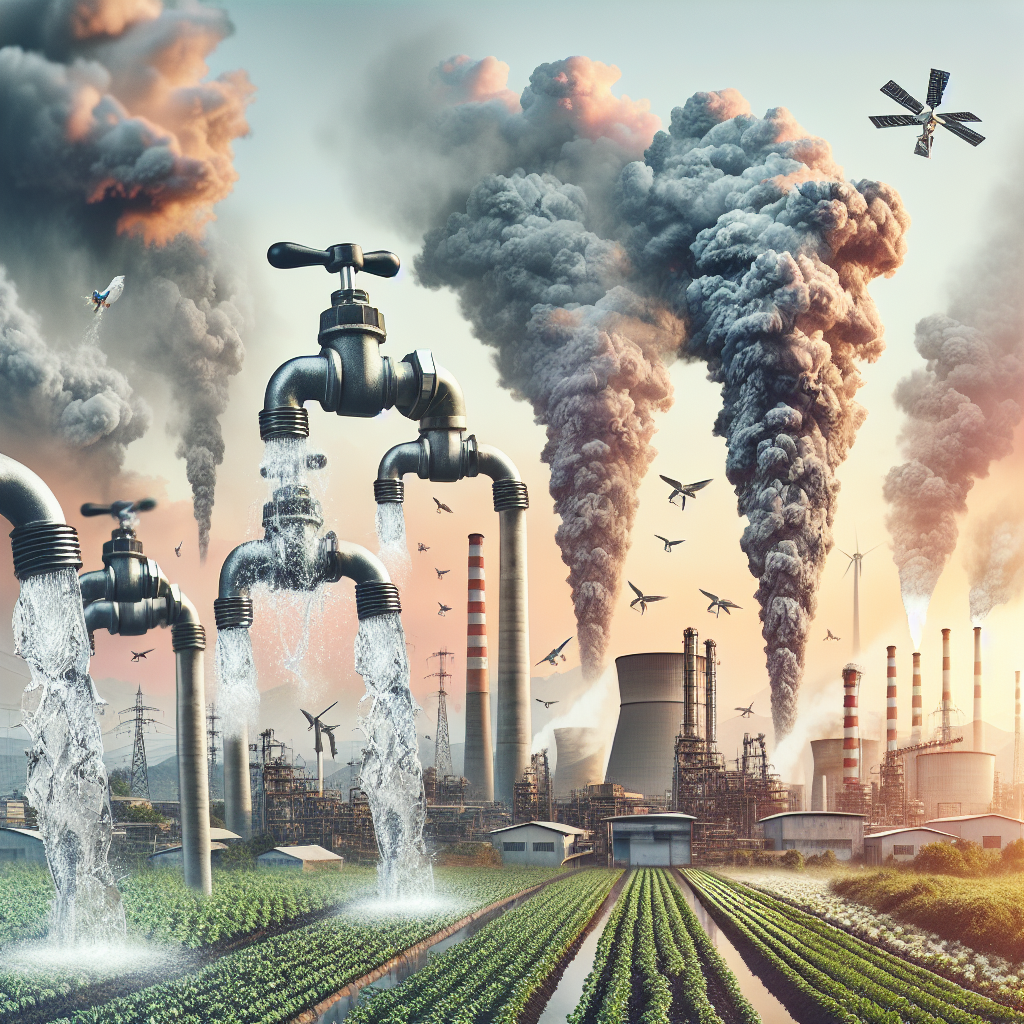The Hidden Carbon Footprints of Water Usage
Water is the essence of life, a crucial resource that sustains humanity, flora, and fauna. While our focus often gravitates towards direct water conservation measures—such as reducing water waste, fixing leaks, and enhancing water recycling—the indirect environmental impacts of water usage, particularly its carbon footprint, receive less attention. This article delves into the hidden carbon footprints of water usage, exploring how our daily water consumption indirectly contributes to greenhouse gas emissions and what we can do to mitigate these effects.
Understanding the Carbon Footprint of Water
The carbon footprint of water refers to the total amount of carbon dioxide (CO2) and other greenhouse gases emitted throughout the water cycle. This includes the extraction, treatment, distribution, usage, and wastewater treatment processes. Each stage consumes energy, primarily derived from fossil fuels, contributing to the overall carbon footprint.
Extraction and Treatment
Water extraction and treatment are the first steps in making water safe and available for human use. These processes involve pumping water from natural sources, such as rivers, lakes, or underground aquifers, and then treating it to meet drinking water standards. The energy required for these processes varies significantly depending on the water source’s location and quality. For example, pumping groundwater typically requires more energy than surface water because it often involves lifting water over greater vertical distances.
Distribution
After treatment, water must be distributed to residential, commercial, and industrial users. This distribution network, consisting of pumps, pipes, and storage tanks, requires substantial energy to maintain water pressure and flow. The longer the distribution distance and the more elevated the service area, the higher the energy consumption.
Usage
The energy consumption associated with water usage primarily comes from heating water for activities such as showering, washing dishes, and laundry. Water heating accounts for a significant portion of household energy use, contributing to the carbon footprint of domestic water usage.
Wastewater Treatment
Once water is used, it becomes wastewater, which must be collected and treated before being discharged back into the environment. Wastewater treatment plants are energy-intensive, employing complex processes to remove pollutants and pathogens. The energy used in these processes further adds to the carbon footprint of water usage.
Mitigating the Carbon Footprint of Water Usage
Reducing the carbon footprint associated with water usage involves conserving water, improving efficiency, and transitioning to renewable energy sources. Here are some strategies:
– Water Conservation: Simple actions like fixing leaks, installing low-flow fixtures, and using water-efficient appliances can significantly reduce water demand and the associated energy for treatment and distribution.
– Energy Efficiency: Upgrading infrastructure to more energy-efficient systems, such as high-efficiency pumps and advanced treatment technologies, can lower energy consumption in water extraction, treatment, and distribution.
– Renewable Energy: Integrating renewable energy sources, such as solar or wind power, into the water and wastewater treatment processes can reduce reliance on fossil fuels and the associated carbon emissions.
– Water Recycling and Reuse: Implementing water recycling and reuse systems can decrease the demand for freshwater extraction and treatment, thus reducing the energy footprint.
FAQs
Q: How significant is the carbon footprint of water usage compared to other activities?
A: While the carbon footprint of water usage might be smaller than other activities, such as transportation or industrial production, it is still significant, especially when considering the cumulative effect of widespread water consumption.
Q: Can individual actions really make a difference in reducing the carbon footprint of water usage?
A: Absolutely. Individual actions, when collectively undertaken by many people, can lead to substantial reductions in water demand and the associated carbon emissions.
Q: Are there any certifications or labels to look for when choosing water-efficient appliances?
A: Yes, look for products certified by labels such as ENERGY STAR or WaterSense. These products meet high water efficiency and energy-saving standards.
Q: How does climate change impact the carbon footprint of water usage?
A: Climate change can exacerbate the carbon footprint of water usage by increasing water scarcity, requiring more energy-intensive methods to secure water, such as desalination or long-distance transportation.
Q: What role do governments and industries play in reducing the carbon footprint of water usage?
A: Governments and industries play a crucial role through policy-making, investment in sustainable infrastructure, and adopting water and energy-efficient practices. Their actions can drive large-scale changes and innovations for a more sustainable water future.
Conclusion
The hidden carbon footprint of water usage is a significant environmental issue that warrants attention. By understanding the energy-intensive nature of our water systems and adopting measures to reduce our water-related carbon emissions, we can take a significant step towards mitigating climate change. Whether through individual actions like conserving water and choosing energy-efficient appliances or through broader initiatives such as investing in renewable energy and sustainable water management practices, every effort counts. Together, we can ensure the sustainability of our water resources for future generations while combating the pressing challenge of climate change.

